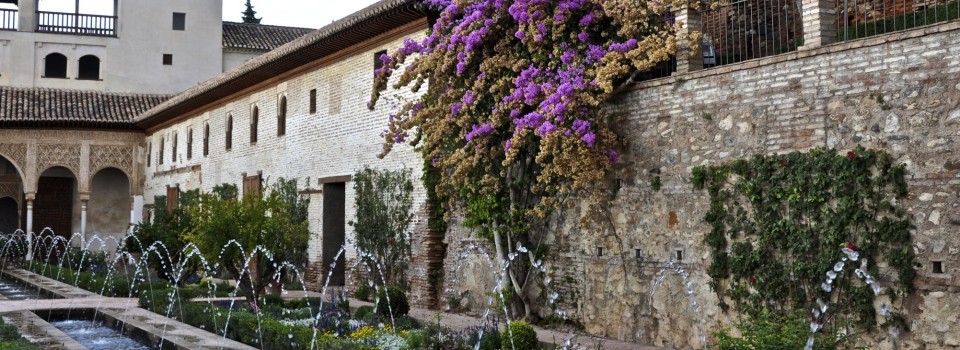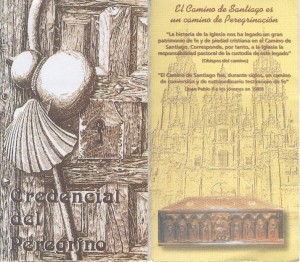
 Where:
Where: Spain: Alicante
When: Academic Year, Fall Semester, Spring Semester, Summer, Winter Semester
Curriculum Highlights: Experiential Learning, Liberal Arts, Language Empowerment, Spanish Language and Cultural Studies, Spanish for International Business, Business Classes taught in English, The Camino de Santiago, Experiencing Rural Spain
Overview: The Academic Language Institute is a focused study abroad program, which takes tremendous pride in providing the highest levels of service to our students. We are located in Alicante, a city of approximately 350,000 located on the Mediterranean coast of Spain.

Alicante is blessed with a mild climate that allows for a full range of extra-curricular activities to complement the academic program. We understand that each person is a unique individual and we strive to help all students have a fulfilling experience within the context of the greater goals that universities have established for international education. We have always believed that studying abroad is a life-changing experience, and we do everything in our power to ensure that each student who participates in our programs comes away with new perspectives, more self-confidence, improved language skills, and a more informed view of the world.
Setting Description: The University of Alicante is rather unique in Spain. It boasts a full-service, American-style campus which brings together all academic departments, administrative offices, sports facilities, cultural events and services (several cafeterias and restaurants, banks, bookstore, post office, and even a travel agent). Student services include a housing office, a volunteer services office, an intramural sports division, an international student center, computer rooms, complete Wi-Fi access throughout the campus, the university library with ample study space, and an outdoors relaxation zone with walking paths and a duck pond. Students can participate in the full offerings of the University and make use of all of the resources located on its beautiful campus.
Experiential Learning
Experiential learning is one of the integral facets of international study. In this type of course, students combine in-class preparation with independent research, a significant field-work component, and a guided observation/analysis paper. They experience first hand what can only be studied in a classroom setting at their home university. All international programs should have some experiential learning components.
A.L.I. currently offers three interesting and unique experiential learning courses. The first two, the Camino de Santiago Walk and Study Tour and A Museum-Based Survey of Spanish Art, are offered each semester as part of the regular curriculum. The last, Experiencing Rural Spain, is a special summer program run in a small rural community in northern Spain.
The Camino de Santiago Walk and Study Tour


This unique experiential learning course was developed by Dr. Miguélez after his own first experience on the pilgrim trail over 20 years ago. Hundreds of students and professors have participated in the more than 50 groups that he has led on their treks along the Camino. Participants learn about the history, art, music, religion, architecture and urban development of northern Spain, challenge themselves physically, have an unparalleled opportunity to commune with nature, and reap the benefits of interacting with “pilgrims” from all over the world. The Camino de Santiago Walk and Study Tour is a complete academic and personal growth experience.
The Camino de Santiago pilgrimage route runs from the Pyrenees to the Cathedral of Saint James (Santiago) in the city of Santiago de Compostela in the northwestern corner of the Iberian Peninsula. Santiago has been the “Mecca” of Christians in Western Europe since the 9th century, and for many centuries was considered one of Christianity’s three holy cities along with Rome and Jerusalem. Millions of pilgrims have walked the trail over the centuries, and evidence of their journeys can still be found along the way.
Trip features and highlights:
Orientation sessions in Alicante prior to pilgrimage.
Transportation from Alicante to the origination point and from Santiago back to Alicante.
5-7 days or walking along the pilgrimage trail for a total of 100 – 125 kilometers
Lodging in pilgrim shelters along the Camino and sharing of communal meals
Daily information sessions about points of interest along the Camino
2 days in Santiago to visit the Cathedral and the city
Pilgrim’s passport
Participants must be able to walk 12-15 miles per day.
This course is accepted for credit at several U.S. universities.
There is an extra fee to cover travel, lodging and meals.
A Museum-Based Survey of Spanish Art
Art is best appreciated by observing it first hand. Students studying art at their home institutions are limited to electronic or slide representations of the magnificent pieces of art that have been produced over the centuries by Spanish artists such as Velázquez, Goya, el Greco, Ribera, Murillo, Picasso, Dali, Miró, and Sorolla among many others. Studying abroad in Spain provides an excellent opportunity for students to get out of the classroom and into the museums to see the original works as they were produced, in full size and proper lighting. It also allows the students to experience the culture and context in which these works of art were produced to obtain a more complete understanding of the pieces.
This course takes students to the museums of Spain – large and small – and exposes them to the architecture of Spanish cities, an important component in a course on art. The museum and city visits are led by the course professor and explanations are given on site. Pertinent information on the artist, period, artistic styles and movements and a reading list to complement museum visits are provided. Students choose an artist, period, style or movement that interests them and carry out an in-depth study for a final paper and presentation.
To complement the course activities, the professor also tailors the course to each student’s activities while in Spain and Europe. In other words, when a student travels independently, indications are given as to the pieces of art and architecture to be seen in the cities visited. In this way, students are taking advantage of all of their travel experiences to expand their knowledge of Spanish art.
Experiencing Rural Spain
The Experiencing Rural Spain course offers participants the opportunity to experience a part of Spain’s reality that most students and visitors to Spain never even glimpse. As in any country, life in small towns forms the foundation for much of the country’s strength and stability. Spain has experienced a significant amount of migration towards urban centers over the last few decades, but life in the “pueblos” of Spain is still vibrant and very relevant.

This unique language and culture course is held in Santibáñez de la Isla, a small farming community in the province of León in northwestern Spain. The population of Santibáñez, according to the latest census, is 277; however, the size of the town swells during the summer months to almost triple its permanent size. This is due to the common phenomenon of Spaniards returning to their roots and places of family origin during the summer vacation months. In spite of its small size, Santibáñez is still a very active community, with its own farming cooperative, grocery store, bar/café, football field, running track, public square and 300-year-old church (with a full time priest in residence). It even has its own web-page . Santibáñez is ideally located only 25 miles from the provincial capital, León, home of one of the most unique cathedrals in Europe, and less than 15 miles from the famous Roman and medieval city of Astorga , which boasts impressive buildings designed by Gaudí. Several medium-sized towns are located within a 10-mile radius, and visits to villages and towns which have maintained age-old craftsmanship are part of the course content (Val de San Lorenzo, where 100% virgin wool blankets are still woven by hand; Jiménez de Jamuz, where artisans produce original pieces of artistic yet usable pottery and cookware, and Castrillo de los Polvazares, a completely preserved, typical 18th century Maragato town, one of a kind in all of Spain).
Participants in the Experiencing Rural Spain program will receive 45 hours of Spanish language and culture instruction through formal classroom and experiential activities. They will reside in housing within the town itself and will interact on a daily basis with the town’s inhabitants as they go about their daily activities. Trips to surrounding villages, town, and cities form an integral part of the academic program and are included in the price of the course.
Due to the unique nature of this program, enrollment is limited to 12 participants. Classes will be held in the village’s old school house (which now houses a small museum of traditional farm implements). Participants will live in farm houses which can accommodate from 6 to 8 participants each. House members will be responsible for planning and preparing their own meals.
Program Dates: 2 weeks in July
Fees include:
tuition for 45 hours of instruction;
2-day orientation in Madrid including one night hotel with breakfast and dinner, walking tour of the city including the Plaza Mayor, the Puerta del Sol, Gran Vía, Cibeles, El Paseo del Prado and a visit to the Prado Museum;
round trip transportation between Madrid and Santibáñez de la Isla at the beginning and end of the program;
bi-weekly visits to sites of interest such as Astorga, León, Castrillo de los Polvazares, Val de San Lorenzo, La Bañeza.
entrance fees to all cultural sites visited;
lodging in multiple-occupancy rooms in “casas rurales” (farm houses) in Santibáñez;
24-hour staff support from arrival to program completion.
Fees do not include: Airfare to Madrid, obligatory personal health insurance, personal expenses, personal phone expenses, some optional activities.
Notice: Participants will be admitted to this course on a first-come, first-served basis, whether taking the course for credit or not. Students who would like to get credit are responsible for arranging for that with their home institution. The ALI academic staff will be glad to provide any information needed for credit to be awarded. A minimum enrollment of 10 is required for the course to be offered.
For more information contact Rebecca Spencer at rspencer@ic.edu.
